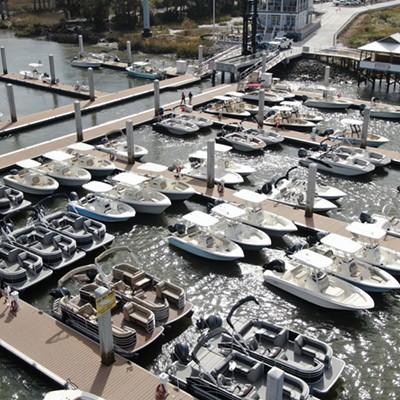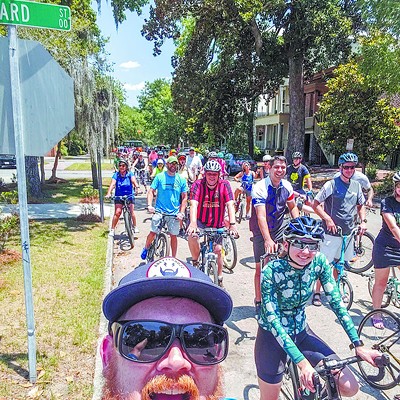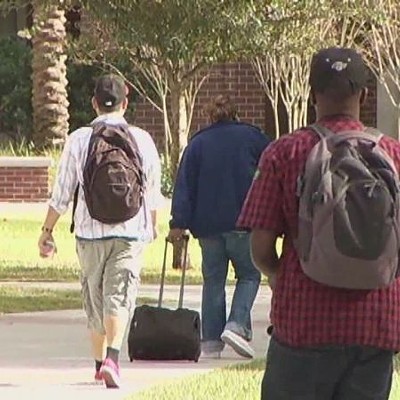
"WRITE ABOUT people riding bikes on sidewalks." That's what a reader recently suggested.
He rides a bike himself, but works downtown and is concerned about people on bikes riding where they shouldn’t.
And with good reason.
Sidewalk cycling can be dangerous for people who do it and there is a chance that a person on a bike could collide with and injure someone who is walking, although a review of Savannah Chatham Metropolitan Police Department incident reports do not reveal any pedestrian vs. bicyclist collisions over the last two years.
Riding on sidewalks can be particularly hazardous around driveways and intersections, where motorists are focused on watching for other cars on the street. This can render a sidewalk bicycle rider functionally invisible.
Yet adults are often surprised when I tell them it’s illegal to ride on sidewalks under state law, which states no person over 12 years of age “shall drive any vehicle upon a sidewalk or sidewalk area except upon a permanent or duly authorized driveway.” (Bicycles are classified as vehicles in Georgia).
While the above section of the Official Code of Georgia is clear, we receive mixed messages on the topic. Sometimes the message is delivered by someone yelling, “Get on the sidewalk!” from a passing car.
One Savannah resident told me she was ordered onto a sidewalk by a law enforcement officer, who used his patrol car’s loudspeaker to issue the command.
Savannah’s Code of Ordinances can also be a source of confusion about sidewalk cycling. Section 230 specifically forbids cycling “on Broughton Street from Martin Luther King, Jr. Boulevard to Lincoln Street” and “Squares located between Gaston Street and Bay Street and East Broad Street and Martin Luther King, Jr. Boulevard.”
This language underscores existing state prohibitions and draws attention to the potential for conflict in places where large numbers of pedestrians are present.
However, cycling is also banned on a portion of “internal sidewalk” in Forsyth Park, which is not technically a sidewalk under state law because it’s not part of a street.
An exception, permitted by state law, allows bicycling on the sidewalks around the perimeter of the park, which do meet the state’s definition of a sidewalk: “that portion of a street between the curb lines, or the lateral lines of a railway, and the adjacent property lines, intended for use by pedestrians.”
Some people make decisions on where they ride based on their desire to stay as far away from cars as possible, and cities around the country are installing protected or buffered bicycle lanes that offer separation from motor vehicle traffic. These types of facilities have not yet arrived in Savannah, so it’s easy to understand why some people presume they’ll be safer riding on a sidewalk, even though the opposite is true in most cases.
But not all. Especially for people who ride bikes not by choice, but out of necessity.
Put yourself in the place of a person who needs to reach a destination on Abercorn Street, south of DeRenne Avenue. Might you decide to ride on the sidewalk?
Or would you feel comfortable mixing it up with multiple lanes of speeding cars and trucks?
It’s not only Southside streets that lead people to seek refuge, even if illusory, on sidewalks. I often see people riding their bikes on Henry Street sidewalks, preferring to travel there instead of on the street where vehicles — including heavy trucks — are moving much, much faster than the 35 m.p.h. posted speed limit.
Dan Piatkowski, an assistant professor of urban studies and planning at Savannah State University, is among a team of researchers who are studying the behavior of people who ride bikes via an online, “Scofflaw Biking Survey.”
On thoroughfares like Abercorn Extension, which Piatkowski described as being designed “much more like a highway than a neighborhood street,” people who depend on their bikes for transportation are compelled to make difficult decisions.
“One of our primary motivations for the survey is the concern that cyclists (and cycling) are negatively stereotyped because bicyclists are forced into situations where they have to break the law to stay safe,” he said.
There really is no analog of this predicament for those of us who drive. When we decide to disobey the law by speeding or texting, for example, we are making ourselves less safe, not more.
Our choices can also have deadly consequences for everyone else on the street, which is almost never the case when people on bikes circumvent the law.





























